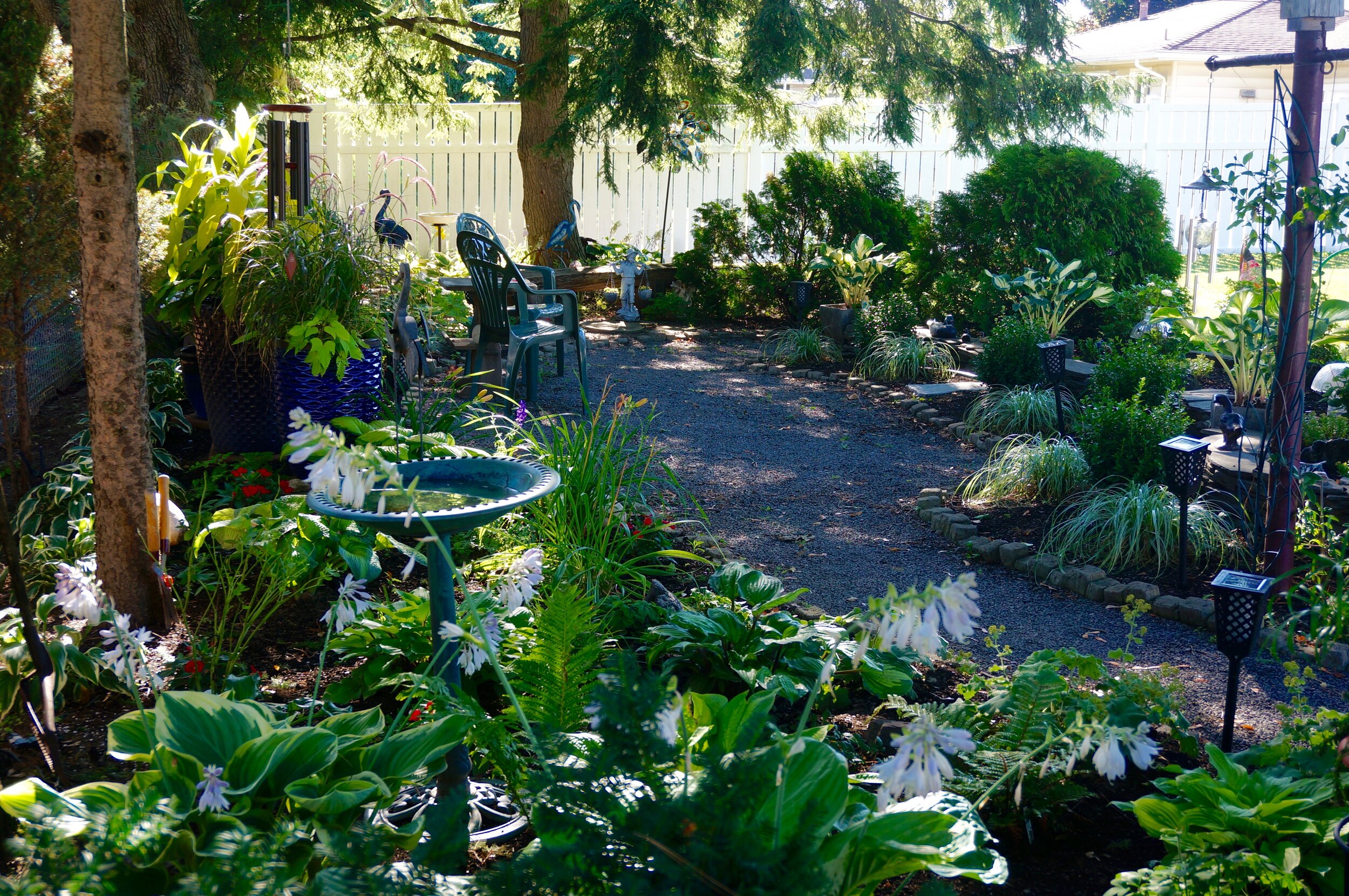Gardening In Impossible Spots: How To Deal With Dry Rooty Soil
Every garden comes with it's own set of challenges, success comes about when you figure out how to make it work in spite of them.
Lee Kedzierski figured out a way to make the most of a tough spot - he gardens underneath several towering Norway maple trees. We met last winter when I spoke at the Ontario Master Gardeners Symposium. Like all gardeners tend to, we launched into a conversation about his garden, dry shade and root competition. I must admit, when I visited his garden later, I was impressed with his solutions.
If you've ever tried planting under a Norway maple, you know they suck the life out of anything you attempt to grow. Their roots are shallow, fibrous little devils that eat up all the soil, leaving you with a rooty mess that is bone dry and impossible to dig in.
In cases like this, it helps to be determined. When Lee and his partner John bought their house in 2017, he took one look at the backyard and immediately fell in love. Beneath the trees, he could just make out the footprint of a small garden. Only a few straggly hostas and azaleas remained, the rest had been overtaken by saplings and weeds. Undaunted by all of this, he set out to reclaim the garden and began working on it piece by piece.
He didn't knuckle under to root competition, instead he fought back using the following strategies.
This is what it looked like in the beginning.
1: Raise the soil wherever you can.
Lee raised the soil level in the right bed by having a retaining wall built around the base of the tree. Several permanent containers were placed into the wall to provide additional planting space.
2. Pick shallow rooted plants that tolerate dry soil:
Lee experimented with a variety of perennials and shrubs, but digging was tough. "In most places, I could only dig down a foot or less," he said. He was able to plant boxwood, some small azaleas and even a few annuals in the raised bed, but the other areas demanded shallow rooted perennials that would tolerate dry feet. Hostas, heucheras, ferns and sedges make up most of his plant palette.
3. Make the most from containers:
Planting in containers allows you to be more creative and gives you freedom to plant things that might not survive being planted in the ground. Containers solve a multitude of problems in Lee's garden, allowing him to add extra height and color to areas with inhospitable, or no soil.
Containers play a major role in this garden.
These containers filled an unsightly hole left by the power company after they did major surgery on several of his tree limbs.
4. Keep plants simple:
Don't try to do too much - stick to a few things that work. Repeat groups of plants for continuity. Lee gets more impact out of his small space by limiting his plant palette to green and white. This year he planted 21 more hostas to fill in bare spots and bump up color and texture.
5. Amend the soil
Put compost in the hole when planting and top dress on a regular basis. Top dressing replaces nutrients that are continuously being sucked up by tree roots.
6. Feed and water
Foliar feed 1-2 times a week. Lee recommends Max Sea, a 16-16-16 organic fertilizer.
Water often - every or every other day.
Gardening with any sort of root competition requires more diligence in regard to watering and feeding. To Lee, it's all worth it. "It's very satisfying to know that I can actually grow something and not be inhibited by roots. It's done a 360 degree turn from what it was and only getting better."
What's your biggest gardening nightmare? Please share!







